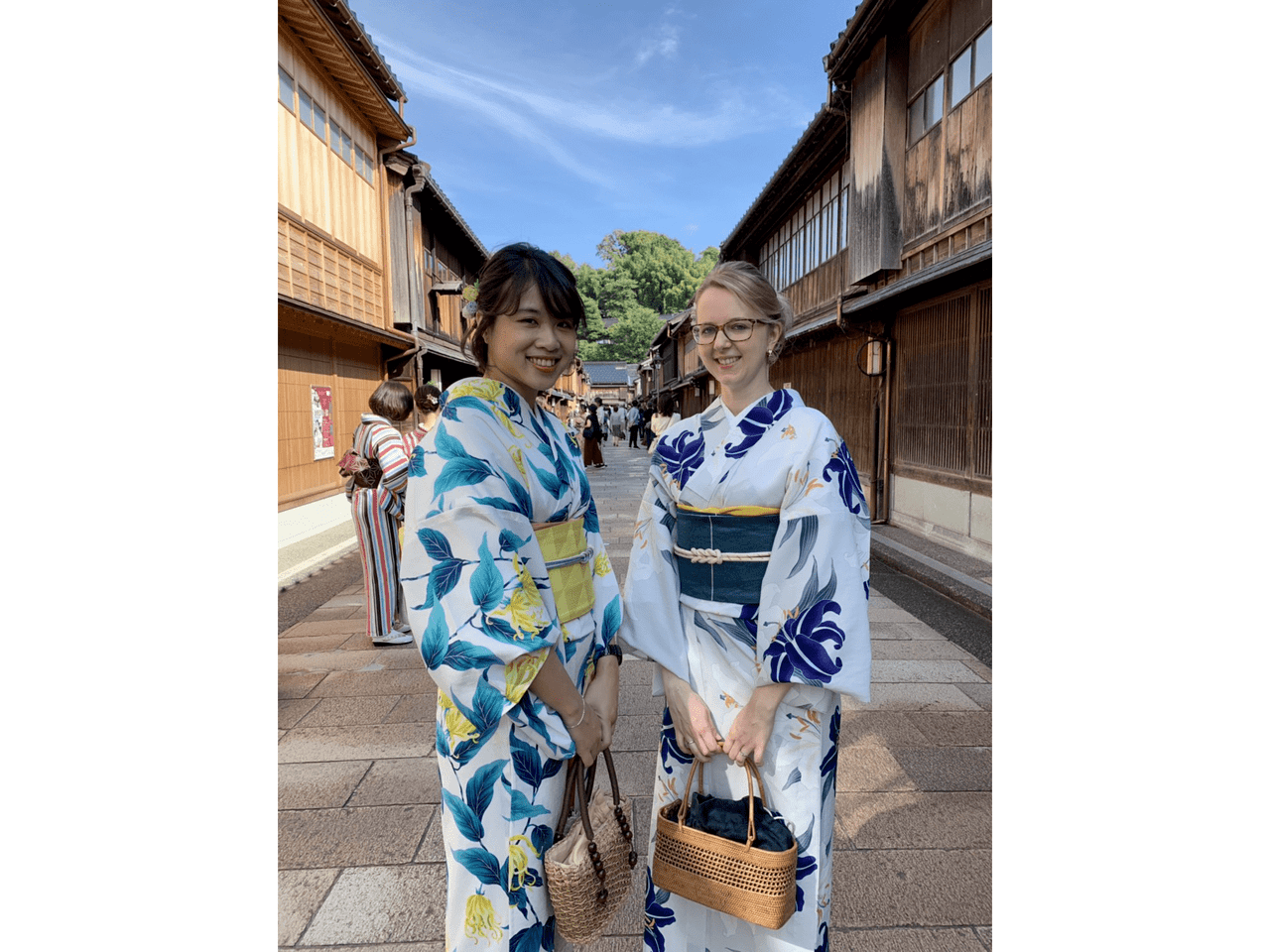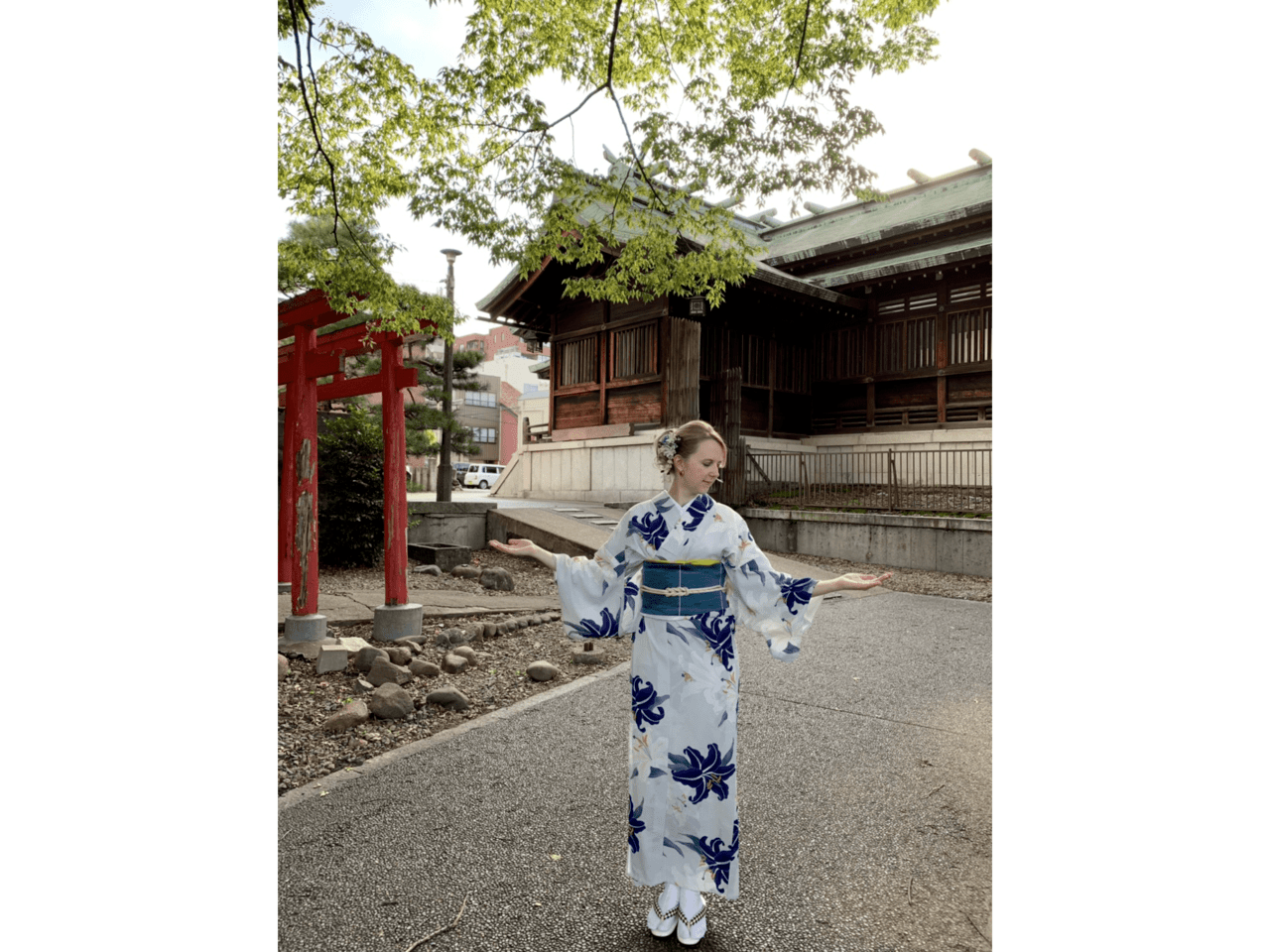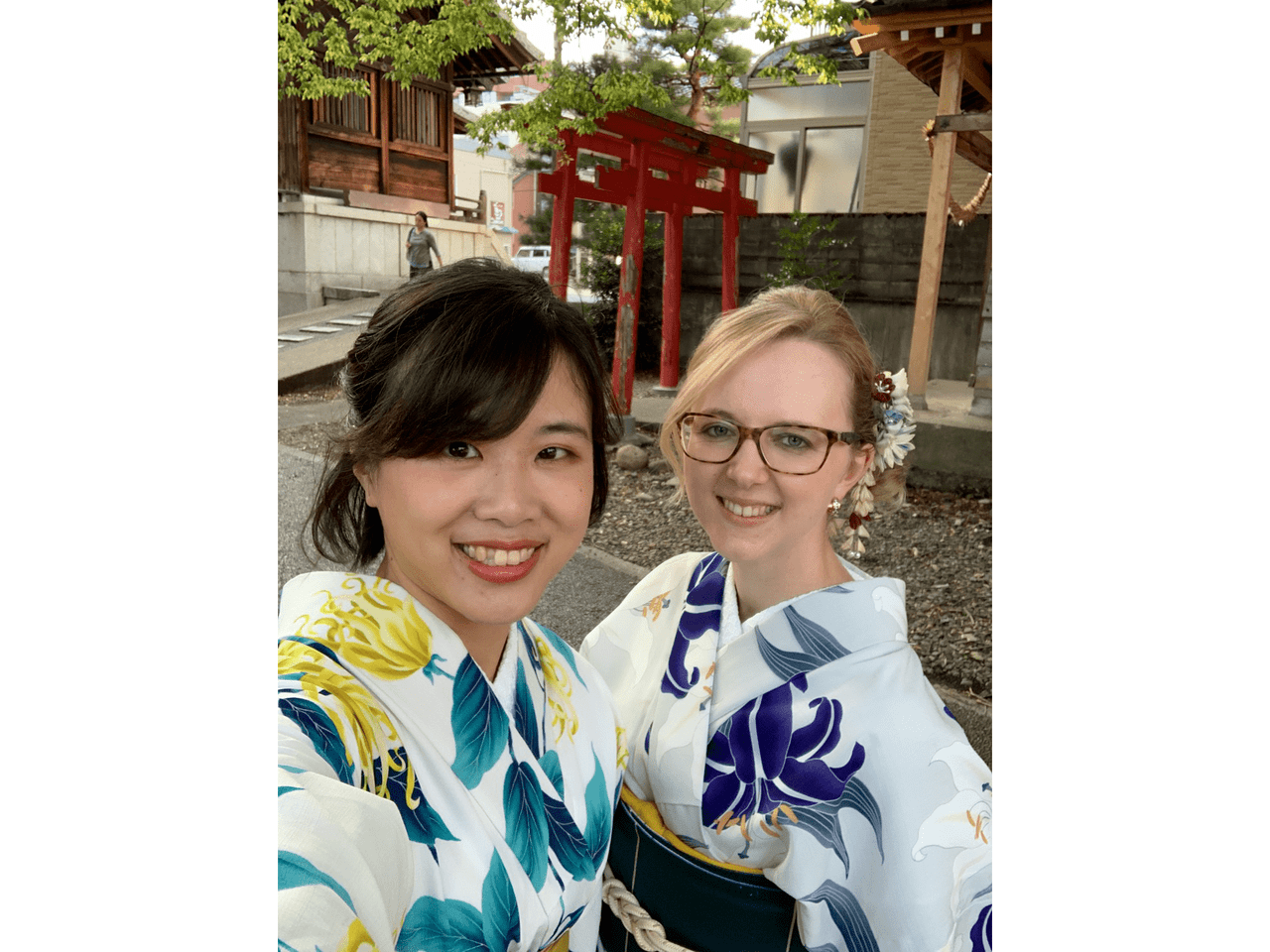Hey everyone, in this post I want to tell you about the traditional Japanese way of dressing: the Kimono. Together with my Taiwanese friend Kao, I experienced myself how it feels to wear such a beautiful and important gown and how difficult it is to get dressed. I will share some tips with you, so that you are well prepared if you are going to Japan and are interested in having this experience yourself.
Some facts about Kimonos
Kimonos are a traditional Japanese dressing gown for women (but also for men). The fabric is made of silk and is dyed in a very elaborate matter. Often, you can also find delicate embroidery on the fabric. Often, people who come to Japan think that it is a good idea to bring a Kimono back home, as it is often associated as THE souvenir. However, the price of a real and beautiful Kimono mostly starts from some 1000 Euros and can easily cost more than 10.000 Euro! The gown is wrapped around you with a complicated set of different belts (often on the inside between undergarment and Kimono). Tiny belts secure the Kimono around your waste so that it falls in an elegant way around your body but is also very tight. The big belt that is visible on the outside is called Obi and is wrapped around the garment at the end (you cannot breathe afterwards). At the back, it is wrapped in an artistic way and it can express many things, such as the social status of the woman (e.g. marital status, wealth, etc.). It can sometimes be even more expensive than the Kimono itself! On top of the Obi, a small and beautifully styled belt is wrapped around and then the outfit is complete. For the feet, you get special socks to wear (they separate your toes in two groups) together with traditional Japanese shoes, the Zori. They look like flip flops and help you to make really small and delicate steps. And walk very slowly…
During summer time, the silken fabric of the Kimono is replaced by a softer cotton fabric and the Kimono is called Yukata. They are often very colorful and use many different patterns. Yukata is also the traditional dress code when you stay at a Ryokan in an Onsen (Hot Spring) place. You can wear it and walk around the town or have breakfast/dinner in your Ryokan. They are also a lot easier to wear (and way cheaper) than the Kimono gowns.
My Kimono experience
So, together with Kao, we went to a rental store to dive into the Japanese Kimono experience. In Kanazawa, there are a lot of Kimono rental stores where you not only get the perfect outfit but also the perfect hairstyle! You can rent the Kimono for one day or even longer.
At first, we had to choose the desired Kimono which was so difficult - there were so many beautiful gowns, it was impossible to find the right one! Lucky for us, the staff was very friendly and helpful so that we were able to finally decide! After the decision, you choose the matching Obi and the upper belt. Also, no easy task and without the help of the staff I still would be there, struggling to find the perfect matching set. Afterwards, we were dressed by the staff and experienced how hard it is to wear this gown: as soon as you are tied in (there were five hidden belts around the Kimono and 3 upper belt that are visible…) you cannot breathe properly anymore, sit down easily or eat. Or make big steps. I have huge respect and admiration towards the women who wear Kimono in their daily life!
 The transformation is complete
The transformation is complete
After the hairstyling, we were ready to walk around in Higashi Chaya and felt so Japanese. It was a very weird experience - usually, Japanese people don’t look at me when I am walking around on the street or sit in the bus. Often you feel a little isolated. But when wearing a Kimono, suddenly so many Japanese people approached me and asked me where I was from or made some compliments on how the Kimono suited me. It was really sweet but also very strange to be at the center of attention. Especially as I was used to the total opposite! Most of them offered to take pictures of us and some of them even took pictures for themselves. :D So crazy! Kao also took so many pictures of us (they are all so lovely, thank you so much!), here are some of them:


 Sitting down was never so hard before
Sitting down was never so hard before

 It’s not easy to walk downstairs in this dress
It’s not easy to walk downstairs in this dress
We had some traditional tea at a teahouse (sipping tea was also not easy in this tight Kimono) and enjoyed a beautiful sunny day. So far, this was one of the most special days I experienced in Japan. Wearing a traditional gown that is an important part of the culture and a truly impressive experience. I am glad I was able to do this and that Kao convinced me to go for it.
But this day would not have been so special if it weren’t for her. Dear Kao, I am so grateful to have met you. Being study mates and facing the Japanese language together, enjoying all the funny lunches, coffee times and activities and even Onsen together have made my September so special. I enjoyed your company so much and I am glad that we are friends. Looking forward to seeing you in Taiwan hopefully very soon and in the meantime, take care and don’t forget to use “sou desu ka” as often as you can. ;-)
 International friendship :)
International friendship :)
Want to try this, too? Here is how:
Going to a rental Kimono store is fairly easy, however, here are some best practice tips that are useful to know beforehand:
1. Short facts about the price
Renting a Kimono is not the cheapest hobby, however it’s fairly reasonable compared to buying a Kimono! In most rental stores, you can choose between different price categories, the lowest starting around 2500 Yen and the highest being about 5000 Yen. The more elaborate your desired Kimono is, the more expensive it will be. If hairstyling is offered, it might cost you between 1500 and 2000 Yen extra. But, it’s totally worth it! The hairstylists are truly amazing and beautifully transform your hair and equip it with very nice accessories which makes the look complete. Most rental shops offer daytime fees, I recommend you to ask before if there are any hourly fees (if you don’t have too much time and only want to wear it for some hours). Often, the staff doesn’t speak English, so be prepared to communicate with hands and feet!
2. Eat well before you go there
As soon as you are tied in your Kimono, you won’t be able to sit down and have a relaxing meal. So try and have a good lunch before you dress up. Also, walking around the whole day can make you very hungry and tired. Take some small snacks with you (nuts, crackers, etc) that give you energy throughout the day but won’t be too hard for your stomach.
3. Use the restroom before you dress up!
I don’t think I have to explain this… please consider that using the toilet with a Kimono can be very tricky.
4. Pregnancy and Kimono are not allowed
If you are pregnant, you are not allowed to wear a Kimono as the whole area of your lower torso will be tied in very tightly and this can affect your health while being pregnant. So, I am very sorry, but if you are pregnant, you really cannot do it. :(
5. Enjoy!
It’s such a cool experience, if you have the chance to do it - do it! Enjoy the feeling and the possibility to experience the traditional culture. I recommend it very much.
